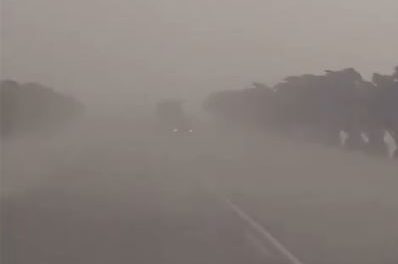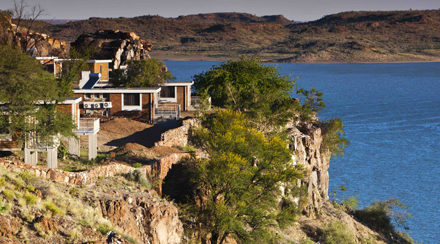
28 August 2014
 What Happened?
What Happened?
Three cold fronts passed the Cape in quick succession on Tuesday, Wednesday and Friday this week. None of the three was particularly strong and the combination of low pressure systems tend to weaken one another, but three such system in a row, leads to an amplified cold front behind the third. That cold intrusion started to be felt during Wednesday night, gained some prominence during Thursday with a marked drop in temperature and colder conditions as far north as Otjiwarongo. Contrary to popular notion, cold fronts are not caused by (low pressure) troughs but are the leading (south-eastern) edge of the approaching high pressure cell. What the low pressure system ahead of the high pressure cell does provide, is the ambulatory mechanism that advects the cold air from south to north. Thus, temperatures in a trough are always somewhat warmer than the air behind it being pushed along by the approaching high. The cold air following in the wake of a trough (low pressure band) is identified and defined as a cold front. The winter rainfall zone, which includes the far south of Namibia, received perhaps its very last favourable advection for precipitation, for this season. Light precipitation was evident along the South African west coast up to Oranjemund, and some light rain was indicated for the area south of Keetmanshoop during Wednesday and Thursday. However, the non-existence of weather stations in this area, makes it very difficult to obtain reliable information if indeed, any rain has fallen, and what the reading was. It is interesting to note that the South Atlantic high pressure cell which made landfall on Wednesday, did so north of the low pressure system moving over the Cape. Conditions along the South African west coast were consequently quite stormy with the wind blowing from the south-west but these conditions subsided further north, and the normal cold intrusion was mostly felt north of Lüdertiz. It was only later in the week, Thursday and Friday, as the high pressure cell moved east, that the cold came directly from the south. While the three cold fronts were pushing in from the south, warm to hot conditions were experienced in the north. A fairly prominent low pressure depression was building during the week over western Zambia, eastern Angola, and northern Botswana. The presence of this rather extensive low pressure area lead to windy, dusty conditions over the central part of the sub-continent but it also diluted the effect of the high pressure cell, quickly dispelling the colder nights, and turning the days into warm events.
What’s Coming?
The Karas and Hardap regions bear the brunt of the cold intrusion from the south during Friday. But at the same time, the cold air conveyor shifts to the east, and during Saturday, it will again be only the Kalahari that remains coldest, longest. However, by Sunday the remnants of the high pressure cell only remains over the eastern Cape, setting the scene for warm to hot early spring days over Namibia.
By Sunday, ahead of the departing high, a strong vortex has formed about 1000 km south of Madagascar. The combined effect of this vortex (low pressure) with the high pressure cell behind it, creates a major conveyor for cold air. However, Namibia lies west of this airlane, so escapes the direct attack. But this south north airflow, as it moves over Limpopo and Zimbabwe, is opposed by the low pressure conditions from the north. The wind backs to east and Namibia feels it as colder air coming from the east. The signatory low pressure trough starts moving south from the Kunene mouth on Sunday establishing warm to hot conditions. By Monday, the local weather is split into a western half eastern half. This leads to a marked pressure differential between the interior plateau and the coastal plain. Consequently, Tuesday and Wednesday will be very windy over the escarpment for the full length (north to south) of the country. By Wednesday next week, a strong vortex, followed by a rather well-defined cold front, approaches from the Atlantic so next weekend’s weather (6 and 7 September) could offer some anomalous surprises. The 10-day outlook of IGES (Institute of Global Environment and Society) indicates light rain across the entire country, ranging from 1mm over the Kunene Region to about 5mm over the Kalahari, but this is more than a week away.











































